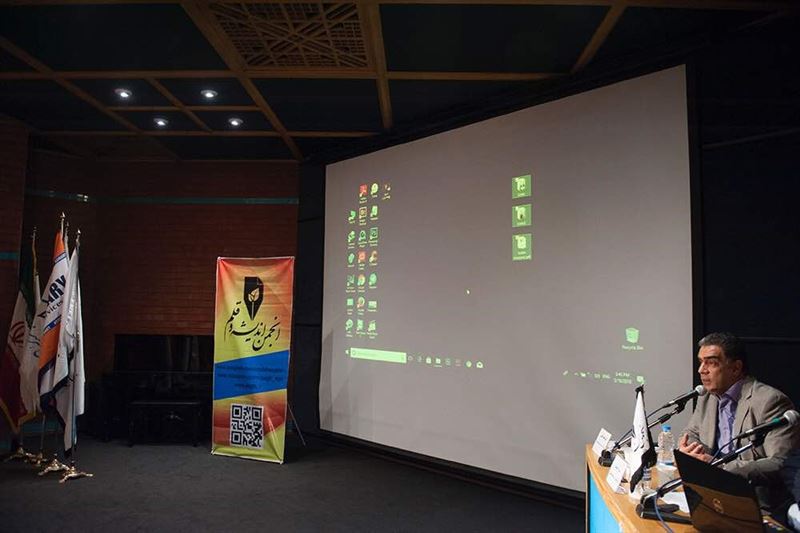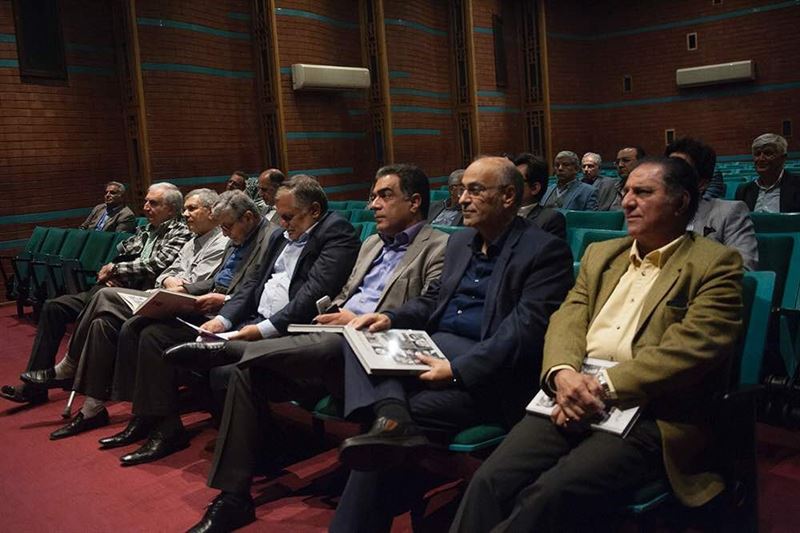Illustrated Book Of Iran’s Oil Industry Published
Sunday, June 10, 2018
The Illustrated Book Of Iran Oil Industry was unveiled during a ceremony in the presence of oil industry officials, artists and cultural figures at Iranian Artists Forum in Tehran.
The book, which includes eight chapters and has been published in 1.000 copies, has been collected by Masoud Forozandeh, a historian. The book has been published by the financial support and contribution of petroleum ministry as well as Technical Services Company of Asmari Oilfields.
The Petroleum Museums And Documents Center Website reported that during the ceremony Rasoul Lahijanian, the manager of the unveiling ceremony called the initiative a new move in the direction of collecting oil industry history with private companies sponsorship.
He said: “It is very pleasant that Iranian oil companies support cultural, artistic and historical projects, a move that will help the writers and artists be able to produce valuable works in the realm of oil industry and its history and that is why I would like to grasp the opportunity to thank Technical Services Company of Asmari Oilfields for sponsoring the book’s publication."

“It was in 2013 that Petroleum Ministry asked Mr. Masoud Forozandeh, a historian, to concentrate his studies and researches on oil industry history. This process kicked off by the special support of the minister of petroleum, Bijan Namdar Zanganeh, and former head of the public relations department of Petroleum Ministry, Akbar Nematollahi. So far, the results have been the publication of a number of worthwhile volumes titled Analytical History Of Oil, Oil Industry Chronology, The Illustrated Book Of Iran’s Oil Industry and two other books related to oil discovery and seas.” He said.
Lahijanian added: “This cultural move could be a good example for the writers and those who are interested in oil industry developments on the one hand and private oil companies, on the other hand, to work with each other.”
According to him, the oil industry has been weak in boosting people’s awareness and creating sensitivity towards its developments.
Lahijanian noted: On the other hand, if you look at the constitution, we will find nothing in it about oil; a problem that we also face when we refer to books dealing with laws as well.
“ As far as it is concerned oil sector, even we have not an especial book covering oil regulations and laws and what we have access to at present is exclusively in the possession of the government,” he said.
Elsewhere in his remarks, he said: Museums, cinemas, and books play an important role in introducing oil industry achievements because they can provide an opportunity for the public to become familiar with the activities and efforts of all those who have been involved in this field and have added new chapters to the history of oil industry.
Easy access to oil industry historical documents
During the ceremony, director of Petroleum Museums And Documents Center, Akbar Nematollahi, said: While we are getting close to May 28, the anniversary of the oil spill from the well number one in 1908, we should accept that we have done nothing for the history of the oil industry.

He went on to say that during the reign of reformists (1997-2005) the first steps were taken for paying attention to preserving the history of the oil industry, we left behind tough periods, some suitable decisions were made but they led to nowhere because those efforts were not organized.
He noted: The next move started at the beginning days of the year 2014 when the Petroleum Museums And Documents Center was launched officially. Afterward, we pursued two important goals; first examining what had been left from the past and secondly, collecting the old oil industry objects and preserving monuments.
“We established two specialized groups for dealing with objects and documents and so far the result has been the identification of 25 million pages of documents and registering 124 places as historical heritage. At the same time we have allocated 23 spots across the country to establishing petroleum museums, of which two museums have been already launched, are open to the public and three others will be launched during the course of current Iranian calendar year to 20th March 2019”, Nematollahi noted.
According to him, Petroleum Museums And Documents Center has launched a division at the center which is focused on the oral history of the oil industry.
“Many great figures came to the oil industry, served the industry and left it with many stories to tell, but those stories remained untold. Now, by founding Petroleum Museums And Documents Center we intend to carry those voices to the ears of upcoming generations”, he said.
“The first thing the division did was doing interviews with petroleum ministers of the country after the victory of the Islamic revolution and it could publish the first book of this kind last year. This book was about the biography of Aliakbar Moeenfar, the first Iranian minister of petroleum after the revolution”, director of Petroleum Museums noted.
Underlining the importance of research in oil industry studies, Nematollahi added: Mr. Forozandeh endured great pain to provide Analytical History Of Oil Industry and Oil Industry Chronology books but fortunately his efforts bore fruit. Furthermore, we have many other useful documents that we will provide access to them either in the form of a book or on cyberspace. This division will scan all the documents in order to make them available to the public.
“I look at this process as a national movement and my hope is that it moves forward with the help it receives from others”, he concluded.







